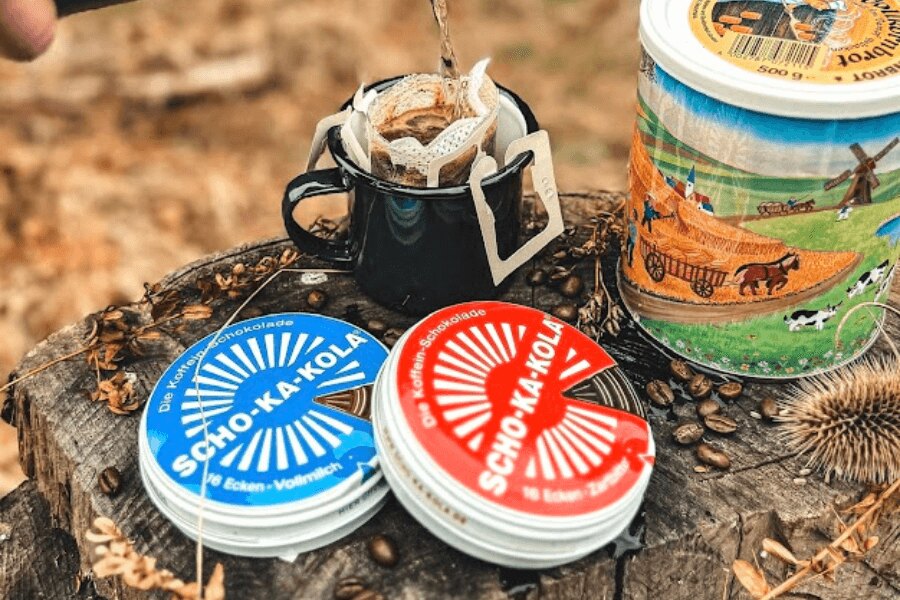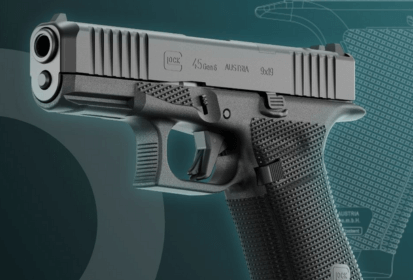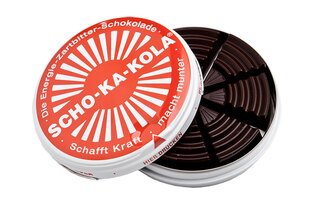Scho-ka-kola: A Legendary Energy Boost with a Rich History
Today, the market is full of energy drinks, bars, chewing gums, and countless other quick pick-me-ups designed to boost your energy and sharpen your focus. However, in this article, we’ll introduce you to a much more traditional energy source: chocolate. Let’s explore the story behind the iconic Scho-ka-kola energy chocolate — its rich history, unique composition, and modern appeal.
A Chocolate Packed with Energy
Scho-ka-kola is one of Germany's most famous brands, specializing for decades in producing energy chocolate with a significantly higher caffeine content than regular chocolate. Why is it called energy chocolate? Thanks to its high caffeine content — sourced from cocoa, coffee, and kola nut extract — it stimulates the central nervous system, reduces fatigue, and promotes alertness. These three core ingredients even lend their names to the product itself: Schokolade (chocolate), Kaffee (coffee), and Kolanuss (kola nut).
Traditional Packaging
Scho-ka-kola chocolate is instantly recognizable thanks to its traditional round tin packaging. Each tin contains 16 triangular pieces of chocolate, neatly stacked in two layers. Today, alternative packaging options like standard chocolate bars are also available, but the iconic tin remains highly practical. After enjoying the chocolate, you can reuse the tin for small survival kits or personal gear.
A Look into the Past
Scho-ka-kola was first produced in 1935 by Berlin-based chocolatier Theodor Hildebrandt. It was officially introduced to the world at the XI Summer Olympics in Berlin in 1936, marketed as a "sports chocolate" with invigorating effects. Over the years, it gained a massive following and became one of the best-known chocolates on the German market.
Chocolate During Wartime
During World War II, Scho-ka-kola became an integral part of military rations, especially for Luftwaffe pilots. Its high caffeine content was meant to keep them awake and alert during exhausting nighttime missions, which earned it the nickname "Fliegerschokolade" — "aviator's chocolate." Later, Scho-ka-kola found its way into emergency food supplies across the German military and was even distributed by Allied forces to civilian populations in war-torn areas.
In 1969, the brand was acquired by German entrepreneur Hans Imhoff. Since 2005, Scho-ka-kola has been produced independently by Scho-ka-kola GmbH, based in Berlin.

One 100g tin of Scho-ka-kola contains around 200 mg of caffeine.
Energy to Go
In addition to the classic dark chocolate version, today you can also enjoy milk chocolate and hazelnut variants. Each type comes in its own distinctive tin: red for dark chocolate, blue for milk, and green for hazelnut. As always, each tin contains 16 energy-packed triangular pieces arranged in two layers.
Craving Some Caffeine?
One 100g tin of Scho-ka-kola contains around 200 mg of caffeine. This means each triangular piece contains about 12.5 mg of caffeine. Eating six pieces provides roughly the same amount of caffeine as a standard energy drink! Compared to regular dark chocolate, Scho-ka-kola can contain up to five times more caffeine, depending on the specific brand and quality of the chocolate compared.
No matter the variety, Scho-ka-kola guarantees a reliable, tasty source of energy that fits easily into your pocket — perfect for hiking, traveling, studying, or simply staying alert throughout the day.
Readers are further interested












































































































































